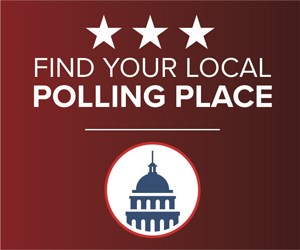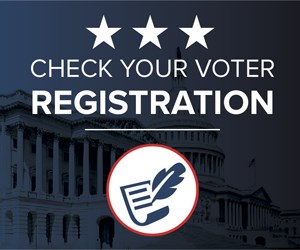Defending Our Schools
If you've watched any television news at all lately, you know that Americans need to do a better job of defending our children from killers in our schools. Not only is there a risk from lone sociopaths--student or adult--there is also the danger of a terrorist attack since, as the horrible crimes in Beslan, Russia, showed, al Qaeda and its allies know how to target schools and murder children.
by Dave Kopel
They Can Do Better. Maybe We Can Help.
First, The Good News
Despite the media frenzy, the actual rate of school shootings is very low. There are more than 50 million students in 119,000 public schools in the United States, plus about 5 million more students in over 28,000 independent or religious schools. Thus the odds that any given school will be attacked are almost nil.
According to the fbi's Uniform Crime Reports, in 2005 in the United States there were 936 homicide victims aged 5 to 17. According to the National School Safety Center, there were 25 school-related murders of students in 2005--if one uses a broad definition, such as a student stabbed while waiting for the subway on the way to school.
Of those school-related murders, most involved gang activity or fights, which attracted little media attention beyond their locality, while five deaths were the result of a nationally publicized rampage by a student at a high school in Red Lake, Minn. Also in 2005, several school employees and police officers were murdered at or near schools, including two in the Red Lake killings.
So while the actual numbers show there is no real "epidemic" of school murders, we all want to work toward a goal of zero murders everywhere--especially at schools, where our most vulnerable citizens spend much of their time. Significant progress has been made since the Columbine High School massacre in 1999 forced school shootings into the public eye, but recent events prove there is still more to be done.
For Consideration: Targeted Police Tactics
One very important change that has already taken place in many communities is a tremendous improvement in all aspects of police response. As the official investigation of the Columbine massacre detailed, the "school resource officer" (on-duty sheriff's deputy) did not pursue the killers into the school building, nor did the other deputies who arrived minutes later. Although swat teams assembled quickly, they were ordered not to enter the building and confront the killers, even though an open 9-1-1 line revealed that students were being executed one at a time in the school library.
After Columbine, many police and sheriff's departments have changed their tactics for an "active shooter" scenario. The new tactics focus on taking immediate action against an active shooter. Many more officers have been issued rifles, heavy body armor and ballistic helmets to assist in their response to an active shooter.
For Consideration: Know Thy Neighbor--And Tell!
Another constructive change is that both law enforcement and the public are much more likely to take preventive action when there are rumors or warnings of a potential attack.
The Columbine perpetrators, Eric Harris and Dylan Klebold, had previously been arrested for burglary and put in a juvenile diversion program. Yet in the months leading up to Columbine, local law enforcement did little in response to the death threats that Harris posted on the Internet, and his boasting that he was constructing bombs--and the discovery of one of his bombs, which matched the type he said he was making. The Columbine killings were planned more than a year in advance, and law enforcement (not to mention the grotesquely negligent parents of the killers) missed many opportunities to intervene.
After Columbine, several school shootings have been prevented by students or other citizens who've come forward when they learned of potential evidence of an attack being plotted--and authorities then conducted a prompt and proper investigation.
As every NRA-trained self-defense instructor teaches, the most important element of self-defense is vigilance, and heightened vigilance is clearly saving lives.
In September, an intruder held several girls hostage and murdered one at Platte Canyon High School in Bailey, Colo. The killer, a 53-year-old man, had been lurking in the school building and the parking lot for more than an hour before the attack began, but nobody reported his presence to school administrators. Now, many schools are exercising tighter control over visitors, requiring identification badges and urging students to notify adults if they see a stranger in the building.
"Injury, shock, grief and despair shouldn't be brought to you by sponsors."--Charlton Heston
For Consideration: Applying Detection Technologies
Some people urge that metal detectors be installed at the entrances to every school. While detectors can alert authorities to students with forbidden objects, they also create huge delays for students coming into the classrooms. Indeed, the long lines of students waiting to be screened could be easy targets for a killer.
Unless every entrance were backed up by an armed guard, a killer would simply make the screeners his first victims, as the Red Lake killer did with the unarmed security guard who was operating the metal detector at that school's entrance. Nevertheless, such screening likely is important.
For Consideration: On-Site, Armed Officers
Other persons have called for deploying more police officers in schools. This seems a sensible strategy, and especially sensible on the anniver-saries of previous school shootings, since we know that mass murderers are often obsessed with the anniver-saries of previous, similar murders.
On the down side, law enforcement resources are already stretched quite thin. According to the International Association of Chiefs of Police, there are 663,535 law enforcement officers, of all types, in the United States. Providing one officer to every u.s. school for the entire school day--to guard against a very rare type of crime--would consume more than a quarter of all police resources, resulting in a significant, and dangerous, reduction of protection provided to the community as a whole.
Some schools or school districts have already hired private security guards, and more will probably do so. While a costly endeavor, if the security guard is readily willing to risk his own safety and protect children by engaging an active shooter, a well-trained security guard could, indeed, save lives.
Wisconsin State Rep. Frank Lasee has proposed that schools have a firearm locked in a safe, under the control of a principal or other qualified administrator, which could be used in case of an attack. Even the fastest police response to a 9-1-1 call takes some time, so Lasee's plan could reduce the time during which killers could roam a building or classroom and kill victims at will. It is undoubtedly more difficult for a perpetrator to methodically execute victims with head shots if the perpetrator himself is being shot at by a rescuer.
For Consideration: Armed Teachers
It has also been suggested by many that teachers be armed, since, after all, they are the ones most likely to be on the scene when an attack begins, and because many believe teachers should have the right to save their own lives and the lives of their students. Some teachers in Right-to-Carry states already carry firearms for protection against attack by ordinary criminals on their way to or from school, or when going about their daily lives away from school.
The idea of armed teachers, however, is unthinkable to some. Yet many of these same people found the idea of armed pilots equally unthinkable--until Sept. 11, 2001. Then, 3,000 people died because in the previous decades, the traditional government and airline policy of allowing pilots to be armed had been changed, leaving pilots defenseless against al Qaeda hijackers.
In response, our nation reformed the law so that pilots can now be armed after receiving special training. The armed pilots program is supplemented by the presence of undercover federal marshals on a small percentage of U.S. flights.
Thus, would-be hijackers now know that there is a chance that the pilots and federal marshals might be armed, but the hijackers have no idea whether there could be armed resistance on any particular domestic flight. Perhaps this is one reason why there have been no attempted terrorist hijackings of any domestic flight since the law was reformed.
Do similar principles apply to protecting our schools? Many people in Utah would say "yes."
The state adopted shall-issue licensing for carrying handguns in 1995 and, unlike most other states, Utah did not make schools off-limits to the licensed, trained adults who passed a background check and safety training. Utah is also a state where there have been no attempts to perpetrate a mass murder at a school. It is, however, impossible to say with certainty whether the deterrent effect of the Utah law deserves some credit.
Like pilots, teachers are a diverse group and many of them would never choose to be armed, even if special training were made available. Yet some teachers who would never carry a gun would likely be interested in training with defensive sprays, or in techniques of unarmed combat--especially how to make a quick move to disarm a criminal with a gun.
The armed pilots and air marshals programs were not implemented in isolation, but rather as part of a holistic improvement of airplane security--including fortification of cockpit doors, more careful scrutiny of visa applicants and many other reforms. Similarly, improved school safety is a goal for which we must search for multiple solutions, rather than expecting that any single improvement can be a cure-all.
For Consideration: No More Glorification for the Murderers
Yet another part of the solution is greater responsibility on the part of the so-called "mainstream" media. School shootings seem to warrant endless hours of coverage on numerous 24-hour news networks, often making the phenomenon seem much more prevalent than it actually is, and frequently delving deep into the shooter's life and personality.
Speaking in Denver after the Columbine murders, Charlton Heston noted that the media too often use school shootings to, "provide riveting programming to run between commercials for cars and cat food." He deplored "the dirty secret of this day" that "media ratings all too often bloom on fresh graves ... Today, carnage comes with a catchy title, splashy graphics, regular promos ... Reporters perch like vultures on the balconies of hotels for a hundred miles around. Cameras jockey for shocking angles as news anchors race to drench their microphones with the tears of victims ...
"Injury, shock, grief and despair shouldn't be brought to you by sponsors," he continued. "It trivializes the tragedy it abuses. It abuses vulnerable people, and maybe worst of all, it makes the unspeakable seem commonplace."
Even worse, as Clayton Cramer has documented in his award-winning article "Ethical Problems of Mass Murder Coverage in the Mass Media," (Journal of Mass Media Ethics, 1993-94), sensational coverage of "great crimes appears to encourage unbalanced people, seeking a lasting fame, to copy these crimes."
Similarly, in the 2004 book The Copycat Effect, Loren Coleman details how the publicity about mass murders and suicides leads to more murders and suicides.
It would be wrong to expect the media to surrender their First Amendment right, and duty, to report the news. It would also be wrong not to urge the media to exercise their rights responsibly. School shooters, like other mass murderers, should not be rewarded by having their pictures placed on the front covers of newspapers and newsmagazines. News coverage that pays more attention to victims and rescuers than to perpetrators is probably less likely to encourage suicidal copycats out for publicity.
Too often, the media have given enormous attention to school murderers as a tactic to promote the gun control agenda. Too often, such attention has likely led other sociopaths and losers to conclude that their one chance to become famous is to attack a school.
Conclusion
Concerning the high-profile school shootings of the past several years, the Second Amendment is not part of the problem--never has been, never will be. But that doesn't preclude the NRA--America's foremost protector of the Second Amendment--from being part of the solution.
Solving the problem of isolated school shootings isn't a task easily determined in just a few days, weeks or even months. Yet any dialog on how to better protect our children in schools should be an all-encompassing one that considers a variety of strategies.
One thing is certain--our children are worth protecting, whether at home, school or anywhere else. Determining how to keep them safe should be a priority for all Americans.













